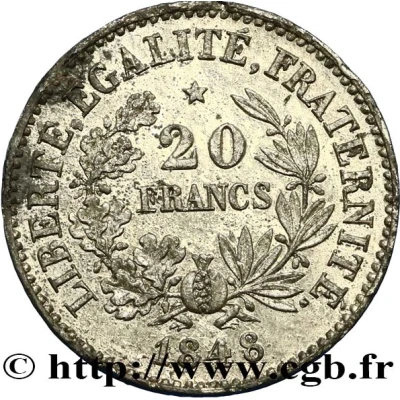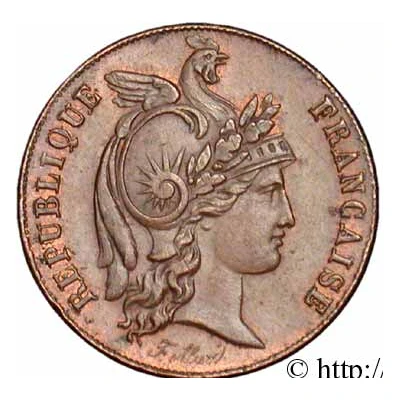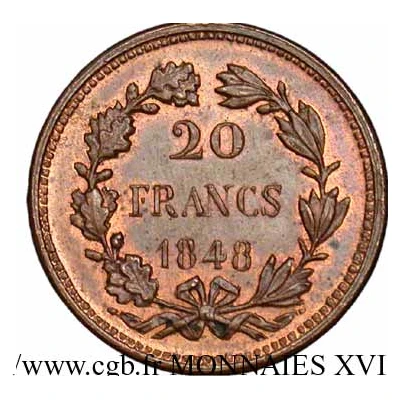


© CGB
20 Francs pattern of Leclerc
1848 year| Tin | 2.62 g | 21 mm |
| Issuer | France |
|---|---|
| Period | Second Republic (1848-1852) |
| Type | Pattern |
| Year | 1848 |
| Value | 20 Francs |
| Currency | Franc (1795-1959) |
| Composition | Tin |
| Weight | 2.62 g |
| Diameter | 21 mm |
| Shape | Round |
| Technique | Milled |
| Orientation | Coin alignment ↑↓ |
| Updated | 2024-10-04 |
| Numista | N#167857 |
|---|---|
| Rarity index | 97% |
Reverse
20/ FRANCS in two lines within a wreath formed by an oak branch and a laurel branch.
Script: Latin
Lettering:
LIBERTÉ , ÉGALITÉ , FRATERNITÉ
1848
Edge
Plain
Interesting fact
The Pattern 20 Francs coin was designed by French engraver and medalist, Jean-Jacques Leclerc. It features a portrait of a young woman representing the French Republic, surrounded by a wreath of oak leaves and the motto "Liberté, Égalité, Fraternité" (Liberty, Equality, Fraternity) on the obverse. The reverse side shows a shield with the French national emblem, a Gallic rooster, standing on a bundle of fasces, surrounded by the words "République Française" (French Republic) and the coin's denomination, "20 Francs". This coin is interesting because it was minted during a time of great change and upheaval in France. The 1848 Revolution had just occurred, and the Second Republic had been established. The coin's design reflects the new government's values of liberty, equality, and fraternity, and it was intended to symbolize the country's commitment to these principles. Additionally, the use of tin as the material for the coin was a departure from the traditional gold or silver used for coins, reflecting the country's desire to create a more accessible and inclusive currency for all citizens.



